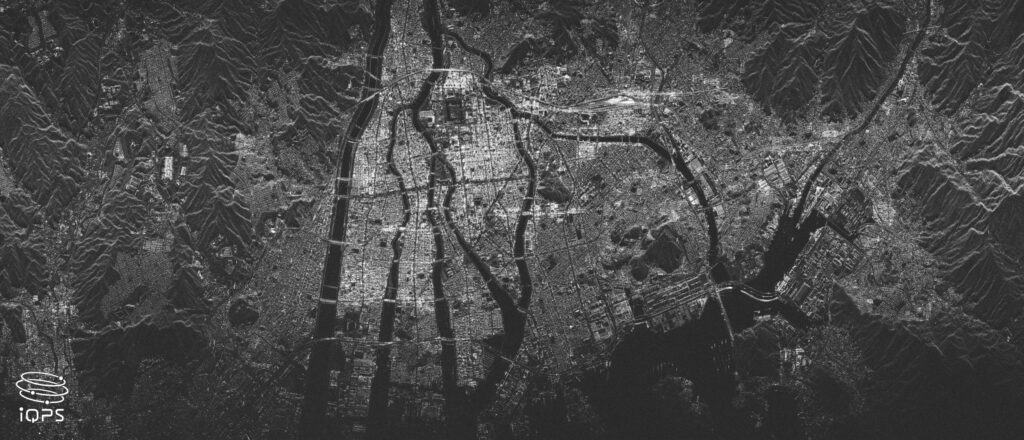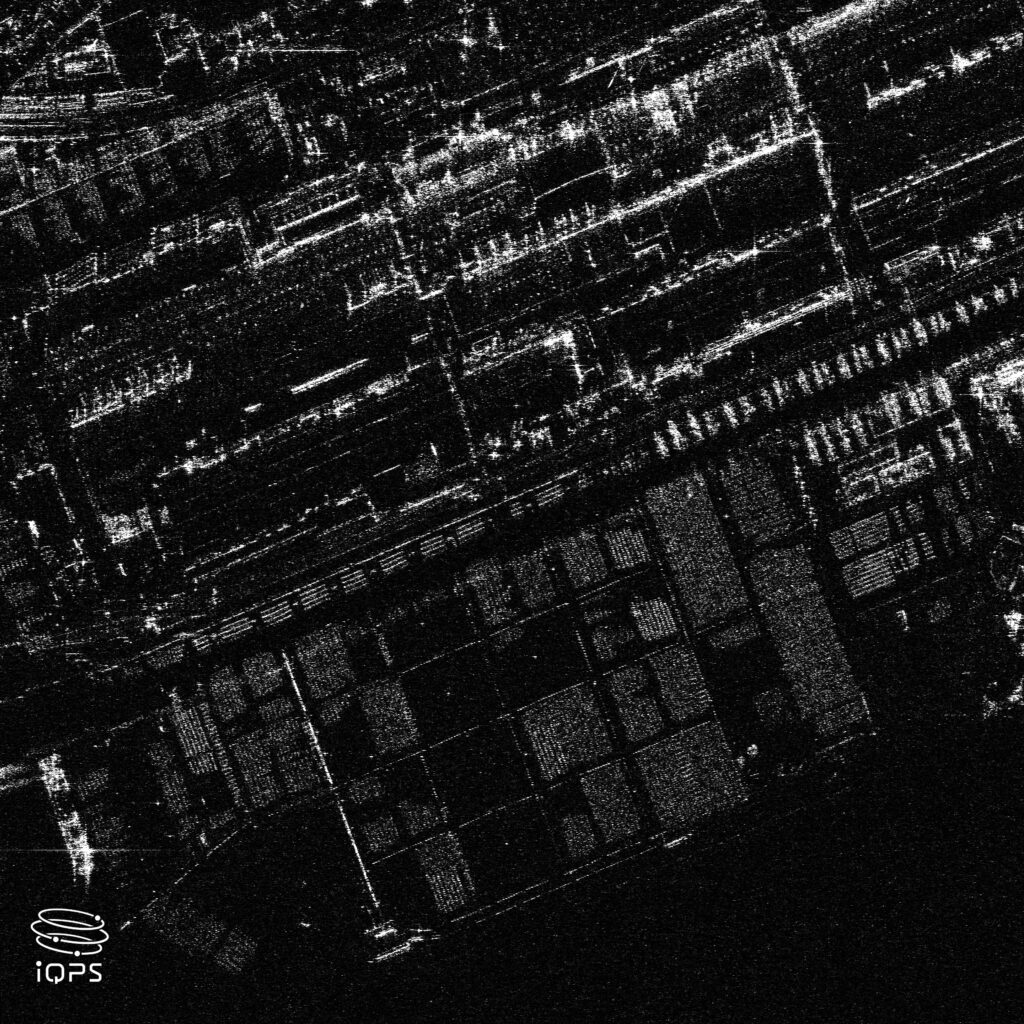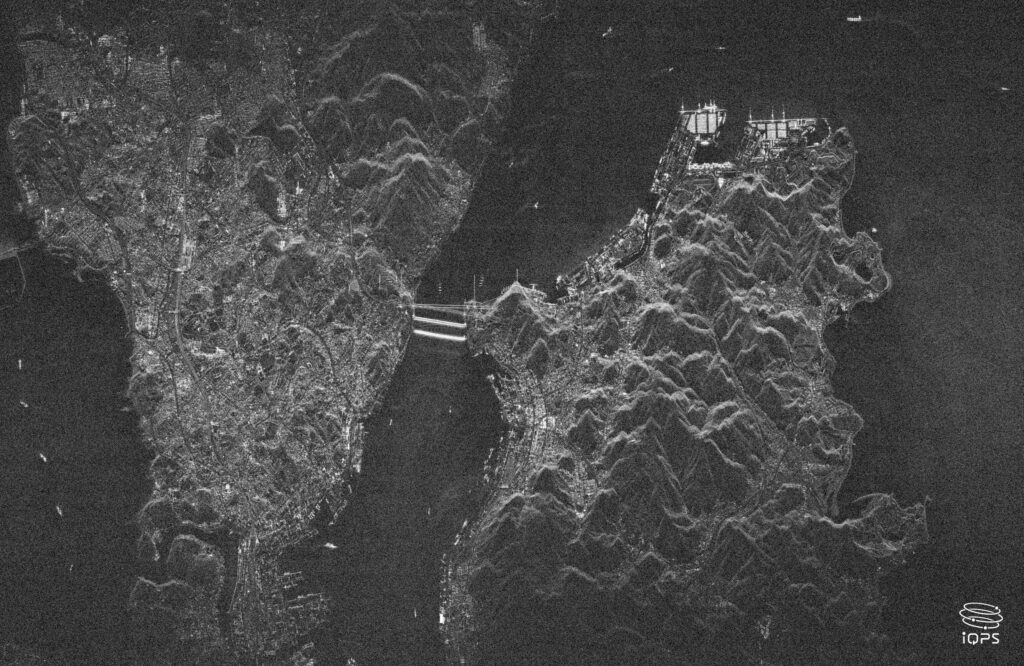2024年1月17日(水)小型SAR衛星5号機 「ツクヨミ-Ⅰ」の初画像を公開します / QPS-SAR-5 TSUKUYOMI-I’s First Light images

QPS研究所は、2024年1月17日(水)に小型SAR衛星QPS-SAR 5号機「ツクヨミ-Ⅰ」の最初の画像(ファーストライト※1)を公開いたします。2023年6月に打上げられた初の商用機であるQPS-SAR6号機「アマテル-Ⅲ」に続き、「ツクヨミ-Ⅰ」は衛星コンステレーションを構築するための2機目の商用機となります。
QPS 研究所が北部九州を中心とした全国25 社以上のパートナー企業と共に開発・製造した「ツクヨミ-Ⅰ」は米国Rocket Lab社のロケット「Electron(ミッションネーム:The Moon God Awakens)」によって2023年12月15日(金)1:05p.m.(日本時間)に打上げられ、57分後に高度約575km、軌道傾斜角42度の軌道に投入されました。そしてその40分後には初交信に成功し、翌12月16日(土)の朝に収納型アンテナの展開をいたしました。その後、衛星機器の微調整を続け、打上げより約1ヶ月後の本日、この度取得した画像の公開に至りました。
この後は、引き続き衛星の姿勢制御の調整を行いつつ、「アマテル-Ⅲ」と同じくアジマス※2、レンジ※3分解能共に46cmの高解像度モードでの観測を開始いたします。
(※1)ファーストライト:初画像のことを言います。公開した画像データは衛星の機能を試験・調整している中で初で確認できた試験データになります。
(※2) アジマス:衛星の進行方向。
(※3) レンジ:衛星のマイクロ波を照射する方向。もしくは、衛星の進行と直交する方向。
【ファーストライト詳細】
| 観測日時 | ① 2024年1月16日(火)18:11(日本時間) ② 2024年1月15日(月)14:46(日本時間) ③ 2024年1月13日(土)19:44(日本時間) |
| 観測場所 | ① 広島県 広島市 (観測時の天候:晴れ、雲量は7〜8割) ② 石川県 輪島市 (観測時の天候:雨) ③ 福岡県 北九州市関門海峡付近 (観測時の天候:曇り〜にわか雨) ※天候は全て気象庁の公開データより |
| 分解能 | ① アジマス分解能1.8m x レンジ分解能49cm (オフナディア角27.7度) ② アジマス分解能1.8m x レンジ分解能50cm (オフナディア角26.9度) ③ アジマス分解能1.8m x レンジ分解能57cm (オフナディア角23.7度) |
| 画像説明補足 | 「ツクヨミ-I」は分解能1.8mの通常モード(ストリップマップモード)と分解能46cmの高精細モード(スポットライトモード)の観測ができ、この度は通常モードでの観測となります。 |
【ファーストライト SAR画像】
QPS-SARは、初期運用の段階で電波の出力を徐々に上げながら試験的に観測を行って、定常的な観測ができる出力値まで徐々に調整いたします。この度の①の広島市の画像は「ツクヨミ-I」の定常的出力による観測をおこなった画像です。②の輪島市は調整中の約1/2の出力、③の北九州市関門海峡は約1/4の出力で観測したものですが、この度、①の広島市と合わせて公開をいたします。
① 広島県 広島市 (Hiroshima-shi, Hiroshima)
海、山、川によってもたらされる自然豊かな様子、市街地の中に6つの川幅の広い河川が流れる「水の都ひろしま」の特徴が分かります。

拡大場所①−1:広島城付近

拡大場所①−2:港に車が並ぶ様子

② 石川県 輪島市 (Wajima-shi, Ishikawa)
画像中心に河原田川が流れる輪島市街地。ツクヨミ-Iは傾斜軌道に投入されているため、太陽同期軌道に比べて東から西に延びる海岸部を広域で観測できます。

③ 関門海峡 (Kitakyushu-shi, Fukuoka & Shimonoseki-shi, Yamaguchi)
関門橋を中心に、右には福岡県北九州市門司区、左には山口県下関市が広がります。行き交う船舶や港湾のクレーンも鮮明に確認できます。

【代表取締役社長CEO 大西俊輔 コメント】
「商用機2機目となる「ツクヨミ-Ⅰ」は大きなトラブルなく初期運用も順調に行うことができ、打上げ約1ヶ月後のタイミングで初画像を公開できたことを大変嬉しく、運用チームをはじめ関係者皆様に感謝しております。「ツクヨミ- I」は傾斜軌道に投入され、日本含めて中緯度付近では1日に同じ地点の上空を5、6回通るため、太陽同期軌道を周回する衛星と比べると観測回数が多く、かつ様々な方向からの観測が可能となり、私たちが目指す準リアルタイムデータ提供サービスにおいても重要な意味を持ちます。この後は、46cm分解能の高精細モードでの観測に向けて引き続き一歩ずつ確実に進んでまいります。」
QPS-SAR-5 TSUKUYOMI-I’s First Light images
Fukuoka, JAPAN – January 17th , 2024 – Institute for Q-shu Pioneers of Space, Inc. (iQPS) released its first light images from QPS-SAR-5, named “TSUKUYOMI-I” which was launched on December 15th 2023 by Rocket Lab Electron “The Moon God Awakens” Mission into an orbit with an altitude of approximately 575 km and an orbital inclination of 42 degrees. After about one month of calibration, TSUKUYOMI-I has achieved successfully its Stripmap mode first light images. iQPS will enhance image quality further by fine-tuning satellite attitude control and commence observations in Spotlight mode (high-resolution mode) which will achieve both azimuth and range resolutions of 0.46m.
<Overview of First light images >
| Observation dates & times | ①18:11(JST)January 16th, 2024 ②14:46(JST)January 15th, 2024 ③19:44(JST)January 13th, 2024 |
| Locations | ①Hiroshima-shi, Hiroshima (Weather: Cloudy) ②Wajima-shi, Ishikawa (Weather: Cloudy) ③Kitakyushu-shi, Fukuoka (Weather: Cloudy) |
| Resolution of first light images | ①Ground plane resolution of Azimuth direction 1.8m, Range direction 0.49m, Off-nadir angle 27.7° ②Ground plane resolution of Azimuth direction 1.8m, Range direction 0.50m, Off-nadir angle 26.9° ③Ground plane resolution of Azimuth direction 1.8m, Range direction 0.57m, Off-nadir angle 23.7° |
TSUKUYOMI-I has observation mode of Standard mode (Stripmap mode) which is 1.8 m resolution and High Resolution mode (Spotlight mode) which is 0.46m resolution. Our first lights are observed by Standard mode (Stripmap mode).
Shunsuke Onishi, CEO message
“We are very pleased to release the first light images of TSUKUYOMI-I, our second commercial satellite, about a month after its launch, and would like to express my sincere gratitude to the operation team and all other supporters. TSUKUYOMI-I is launched into an inclined orbit and passes over the same point five or six times a day in the mid-latitudes, including Japan, making it possible to make more observations than a satellite in sun-synchronous orbit and from various directions. This is pivotal for the near-real-time data provision service we are aiming for. Now we will continue to make steady progress step by step toward observations in high-resolution mode”.
